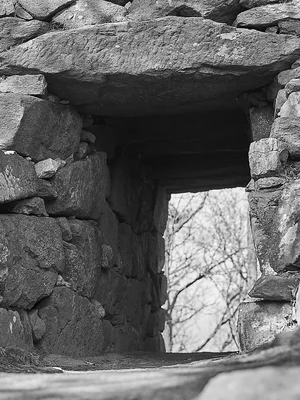Ganghwa Island: Dolmens, Korea's Oldest Buddhist Temple, Goryeo Relics, DMZ

luggage What's included
star What Our Guests are Saying
explore Experience on This Tour
Experiences
During the dynasty (kingdom) of Goryeo, the island was often used by Korean kings as a temporary refuge when attacking the country by external enemies; this happened in the 13th century. during the military campaigns in Korea of the Mongols, when for a short time the island of Ganghwado became the capital of Korea. In the 17th century, the royal court was evacuated to about. Ganghwado fleeing from the Manchus. A royal palace was built on the island, which, unfortunately, has not survived to the present day; now you can see only a partially restored copy of this palace, as well as the remains of military fortifications (forts) designed to protect the island from intruders.
In the 19th century on about. Ganghwado signed a historic treaty that "opened" Korea to foreign states ("Kanghwa Treaty" between Japan and Korea, 1876). From that moment begins the tragic story of the "discovery" and subsequent subjugation of Korea to foreigners, primarily Japan.
We will visit 2 of the many forts preserved on the island.
When you go to Ganghwa-do Island, you will find not only ancient dolmens, but also other amazing cultural sites that are closely associated with religion. For example, the oldest known Buddhist monastery on the Korean Peninsula is Chongdeunsa, which was founded by the monk Ado Hwasan back in 381.
Chondynsa Monastery attracts with its atmosphere of antiquity and spiritual significance. It is located on the land that in the past served as the site of the ancient fortress of Samnanseong, which was first mentioned in 1259, during the Goryeo era.
Walking through the territory of the Chongdeunsa monastery, you will plunge into the centuries-old history and be able to feel the deep spiritual heritage of Korea. Graceful architecture, surrounded by beautiful nature, creates an atmosphere of peace and inner peace.
Here you can take a break from the hustle and bustle of the modern world and feel the energy and spirituality of this place. Jeongdeunsa Monastery on Ganghwa-do Island is a holy retreat where Buddhism, Korean culture and history meet.
Ganghwa-do is a real "open-air museum".
The Dolmens of Ganghwa Island, these Bronze Age relics, are now listed as a UNESCO World Heritage Site. Burial and ritual monuments made of massive stones were created in the 2nd and 3rd millennia BC.
Ganghwa-do Island is proud of more than 120 dolmens, which surprise with their grandeur and significance. A visit to the "Dolmen Park" will allow you not only to get acquainted with authentic Korean dolmens, but also to see dolmens from other countries. Here you can discover the diversity of megalithic culture and feel the spirit of antiquity that still lives in these stone monuments.
Ganghwa is a place where the past and the present merge, where you can see the world heritage that represents the cultural richness of Ganghwa-do and all of Korea.
According to legend, the fortress, in which the famous temple of Jeonyn-sa is located, was built by the children of Tangun, the ancestor of all Koreans! We get acquainted with its history, as well as with the history of Ganghwa-do, at the Ganghwa-do History Museum.
Ganghwa Peace Observatory is a symbol of the divided Korean Peninsula — an observation facility located just 2.3 kilometers from the North Korean border. From the third floor, visitors are treated to sweeping views of the Han River estuary, the Gaepung Plain, and the sacred Mount Songaksan in Kaesong.
Don’t speak Korean? No problem — inside, you’ll find a quirky exhibit that teaches you “North Korean language” (that is, the vocabulary differences between North and South Koreans).